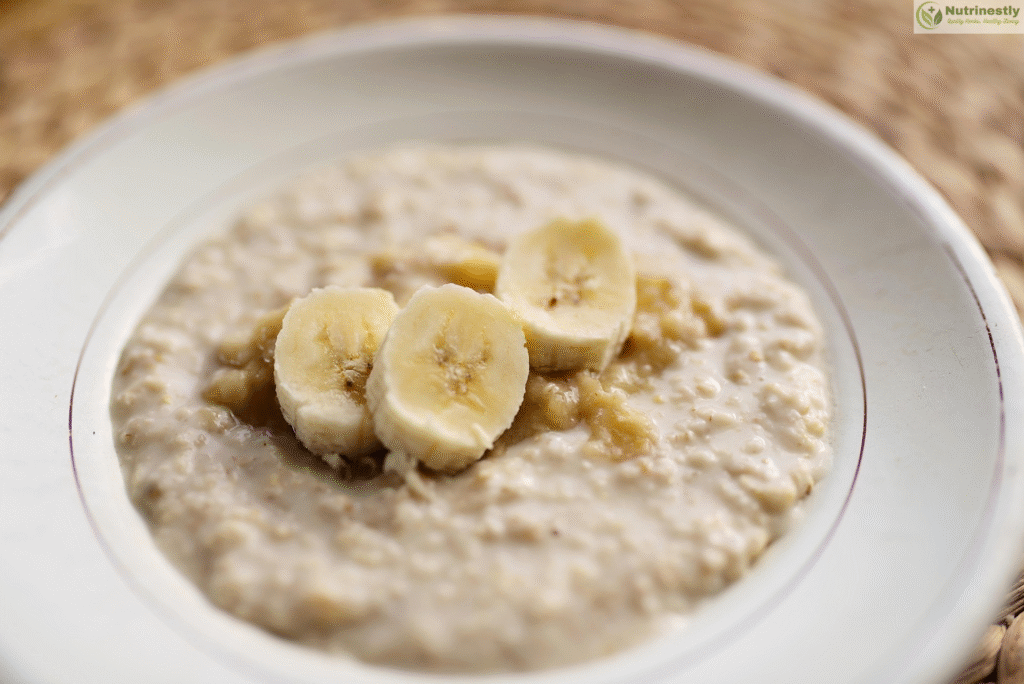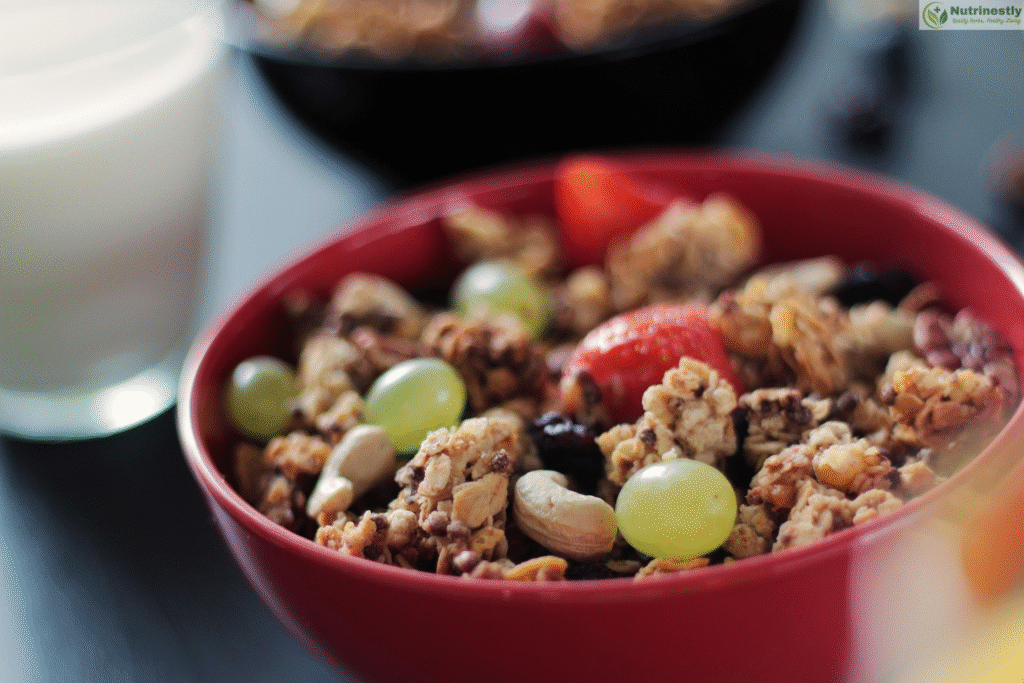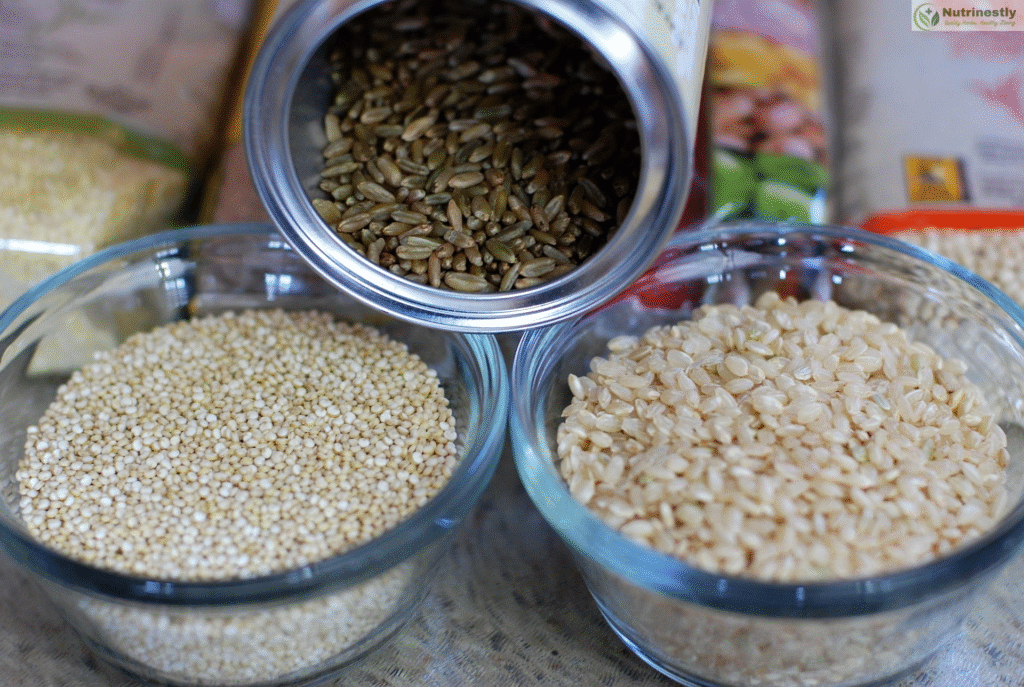
I. Introduction
A. What Is High-Fiber Cereal?
High-fiber cereals are breakfast foods that offer a considerable portion of dietary fiber per serving, usually 5 grams or higher. Composed of whole grains, bran, oats, seeds, and legumes, high-fiber cereals are crafted to assist individuals in attaining their daily fiber requirements in an efficient and tasty way.
B. Why does it matter in your diet?
It is not merely about “keeping things moving.” It’s a vital nutrient that plays a significant role in
- Maintaining digestive health
- Regulating blood sugar
- Supporting heart health
- Promoting satiety and weight management
But most people fall well below the daily recommended amount of fiber.
C. What This Guide Covers:
In this complete guide, you’ll discover :
- The science behind dietary fiber
- The nutritional edge of high-fiber cereals
- How to choose the right cereal for you
- Tips for integrating them into your meals
- Potential drawbacks to be aware of
- Insights from nutritionists and studies
II. Fiber Facts
A. The Two Kinds of Fiber
There are two primary forms of fiber, and both have different purposes.
1. Soluble Fiber
- Dissolves in water and turns into a gel-like product
- Aids in cholesterol reduction and blood glucose regulation
- Contains oats, barley, beans, and fruits
2. Insoluble Fiber
- Adds bulk to stool and encourages regular bowel movements
- Prevents constipation
- Occurs in whole wheat, wheat bran, vegetables, and whole grains
B. The Health Benefits of Fiber

It does more than assist digestion; here are some effective benefits:
1. Digestive Health
- Supports gut microbiota
- Prevents constipation and encourages bowel regularity
- Reduces risk of diverticulitis
2. Heart Health
- Lowers LDL cholesterol
- Reduces inflammation
- Helps to keep blood pressure healthy
3. Weight Management
- Increases satiety (feeling of fullness)
- Slows digestion, curbing cravings
- Aids in calorie control naturally
III. High fiber cereal Nutritional Profile
A. Major nutrients present in High-Fiber Cereals
Apart from this , these cereals tend to have:
- Whole grains such as oats, barley, and wheat bran
- Protein from seeds, legumes, and nuts
- B vitamins (particularly folate, B6, and niacin)
- Minerals such as zinc, magnesium, and iron
- Antioxidants due to seed and fruit inclusions
B. High-Fiber vs. Regular Cereals
| Characteristic | High-Fiber Cereal | Regular Cereal |
|---|---|---|
| Fiber per serving | 5–14g | 1–3g |
| Whole grains | Often sole ingredient | Often negligible |
| Sugar | Typically low or nonexistent | Can be extremely high |
| Satiety | Longer feeling of fullness | Less filling |
| Processing | Less processed | Tends to be heavily processed |
C. How Much Fiber Do You Need?
Based on the Dietary Guidelines for Americans:
- Women: 25 grams per day
- Men: 38 grams per day
- Children (4–18 years): 19–31 grams, based on age
Most adults eat less than 15 grams, so high-fiber cereals are a convenient way to make up that difference.
IV. Popular High-Fiber Cereals on the Market
A. Top Brands to Try
Here are some high-fiber champs to try:
- Kashi GoLean Original—13g fiber, very high protein
- Fiber One Original Bran—14g fiber, nearly zero sugar
- Uncle Sam Original—10g fiber, contains flaxseeds
- All-Bran by Kellogg’s—10g fiber, old-fashioned bran flavor
- Nature’s Path SmartBran—13g fiber, organic products
- Ezekiel 4:9 Sprouted Whole Grain Cereal—6g fiber, no added sugars.
B. Nutritional Comparison Chart
| Cereal | Fiber | Sugar | Protein | Calories |
|---|---|---|---|---|
| Fiber One | 14g | 0g | 2g | 90 |
| Kashi GoLean | 13g | 9g | 12g | 180 |
| SmartBran | 13g | 6g | 4g | 130 |
| All-Bran | 10g | 5g | 4g | 80 |
C. Unique Features
- Kashi GoLean: Good source of protein
- Ezekiel 4:9: Sprouted grains for enhanced nutrient uptake
- SmartBran: Oat bran and wheat bran blend
- Fiber One: Best for diabetics with no sugar
V. Choosing the Right High-Fiber Cereal
A. Reading a Nutrition Label Like a Pro
Look for:
- Fiber content: 5g or higher per serving
- Serving size: Be wary of small servings
- Whole grain as first ingredient
- Short ingredient list is generally good
B. Watch for These Red Flags
- Added sugars (anything ending in -ose: sucrose, glucose, etc.)
- Artificial sweeteners (aspartame, sucralose)
- Preservatives and additives
“Fiber-enriched” with isolated fibers (e.g., polydextrose) is less effective than natural fibers.
C. Factor in Your Dietary Needs
- Low-carb or keto: Opt for bran cereals with no added grains
- Low-sugar: Check for cereals with under 5g of sugar
- High-protein: Look for cereals with legumes or seeds
Gluten-free: Choose oat-based or seed-based cereals
VI. Creative Ways to Enjoy High-Fiber Cereal
A. Beyond the Bowl: Breakfast Ideas
- Yogurt parfaits with berries and high-fiber cereal
- Overnight oats with bran flakes
- Smoothie bowl toppings for crunch
B. High-Fiber Snacks and Recipes
- Cereal bars with nut butter and dried fruit
- Baked muffins using crushed high-fiber cereal
- Energy balls mixed with oats and bran.
C. Perfect Pairings
- Bananas, apples, berries have more fiber and flavor
- Nut butters add healthy fats and satiety
- Greek yogurt or plant-based milk adds protein and creaminess
VII. Potential Drawbacks of High-Fiber Cereals
A. Digestive Adjustment Period
- Can cause bloating or gas if you increase intake too quickly
- Drink plenty of water to help fiber move smoothly through the gut
B. Overdoing It
- More isn’t always better; too much fiber can lead to
- Constipation
- Mineral absorption issues
- Stomach discomfort
- Constipation
Stick to 30–38 grams/day unless your doctor advises otherwise.
C. Don’t Fall for the Marketing
Watch for terms like
- “Made with whole grains ”may” only include a tiny amount
- “Good source of fiber” may” still be low overall
- “Natural” or “Healthy” are not regulated terms
Always read the label, not just the box front.
VIII. High-Fiber Cereal and Special Diets
A. Gluten-Free Options

Look for certified gluten-free cereals made from
- Oats (certified GF)
- Brown rice
- Quinoa
- Buckwheat
- Millet
Brands to try:
- Nature’s Path GF cereals
- Love Grown Power O’s
- Arrowhead Mills GF Puffed Millet
B. Vegan and Vegetarian Considerations
- Most high-fiber cereals are plant-based by default
- Avoid those with vitamin D3 sourced from lanolin or milk powders
- Use plant-based milk or vegan yogurt for added nutrition
C. For Specific Health Conditions
- Diabetics: Choose low glycemic cereals with no added sugar
- IBS or IBD: Avoid very high insoluble fiber; go for oats and psyllium
- Heart disease: Soluble fiber from oats is especially beneficial
IX. Expert Opinions and Research Findings
A. What Nutritionists Say
“A high-fiber breakfast sets the tone for the day. People who eat fiber-rich meals in the morning are less likely to snack on sugary foods later.”
Registered Dietitian Claire M.
“Whole-food sources of fiber are more beneficial than isolated additives. Always prioritize cereals made with intact whole grains.”
Dr. Rachel Lin, PhD Nutrition
B. Recent Studies
- A 2020 meta-analysis in The Lancet found higher fiber intake reduces all-cause mortality by up to 30%.
- Research from Harvard shows whole grain cereals reduce type 2 diabetes risk by 19%.
C. Practical Recommendations
- Start small increase fiber gradually
- Combine soluble and insoluble sources
- Mix cereals for flavor and variety
- Drink at least 8 cups of water daily to support fiber’s effects.
X. Conclusion
A. Recap: Why High-Fiber Cereal Matters
- An easy, accessible way to meet your daily fiber needs
- Offers real benefits for digestion, heart health, and weight control
Can be tailored to almost any diet or lifestyle.

